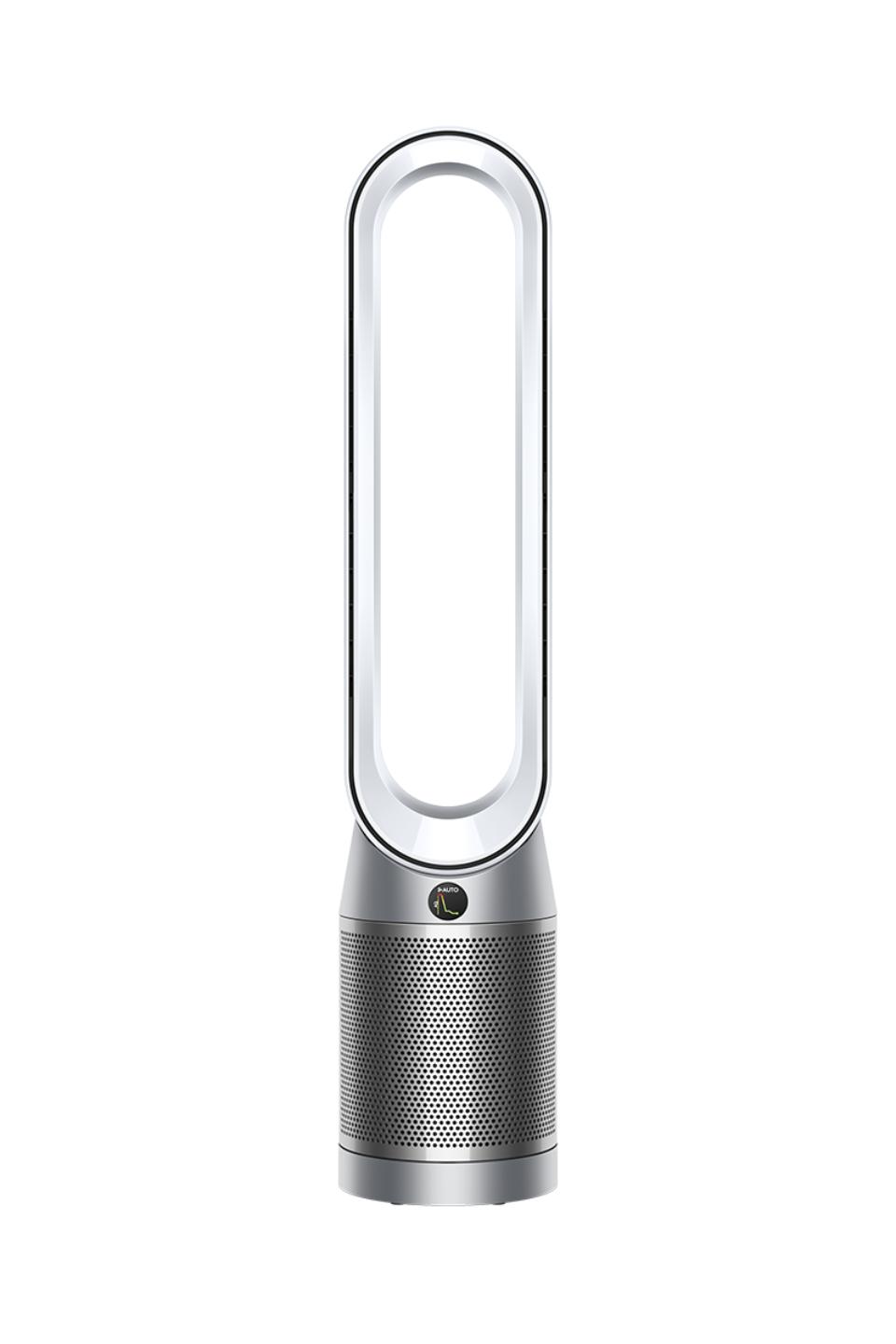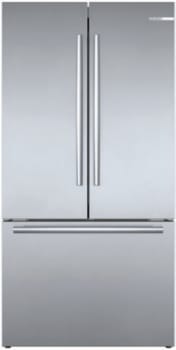Bosch 800 Series 36 in. 21 cu. ft. French 3 Door Refrigerator in Stainless Steel with Dual Compressor, Counter Depth
FarmFresh System™ is to keep your food fresher, longer. FlexBar™ organizes your fridge in ways never done before. Drip-free interior water dispenser provides a streamlined design.
Introducing the revolutionary, Bosch counter-depth refrigerators, with a streamlined interior and advanced freshness system designed to keep the ingredients you love fresher longer. Enjoy less food waste, and more thoughtful design. Our revolutionary FarmFresh System combines four innovative technologies designed to take food preservation to the next level, while minimizing food waste. Working in harmony, the (1) VitaFreshPro, (2) FreshProtect Ethylene Filter, (3) MultiAirFlow, and (4) AirFresh Filter provide the optimal environment for your food storage needs. An industry first, VitaFreshPro automatically balances both temperature and humidity. From produce to meats to cheeses, pre-programmed settings calibrate the optimal environment, removing the guesswork from food storage. FreshProtect absorbs naturally occurring ethylene to slow ripening, so produce stays fresher, longer. MultiAirFlow and AirFreshFilter work together to keep the temperature in your entire fridge consistent while reducing odors. Its refrigeration, reinvented.
- ENERGY STAR Qualified for year round energy and money savings
- A generous 21 cu. ft. capacity is made even more spacious with flexible storage features like the industry first FlexBar, and removable shelves and door bins
- Thoughtfully tucked away is the internal water dispenser for refreshing, pure water at the touch of a button, or push of a nozzle, without disrupting the exterior design in
- The advanced ice maker creates pyramid-shaped ice straight from your freezer, Fully accessible via a pull-out bin and ice scoop
- Experience crisp, beautiful LED illumination from corner to corner
- This freestanding refrigerator sits flush with the countertop, features hidden hinges, and discreet tucked away feet, all to give you a true built-in look and feel
- The revolutionary FarmFresh System combines four innovative technologies designed to take food preservation to the next level, while minimizing food waste
- FarmFresh System keeps your food fresh up to 3x longer, for less food wasted.* — *As compared to a Bosch refrigerator without FarmFresh System. Results may vary among different foods*
- Store oversized platters with ease until youre ready to serve them, or store snacks for quick access and easy visibility
- Keep your kitchen looking beautiful with an easy to clean stainless steel exterior
- Home Connect lets you easily manage your Bosch refrigerator from the convenience of your smartphone or tablet
- Premium and modern touch control display is strategically placed for easy accessibility, and allows you to control the features of your refrigerator with the touch of a button
- Dual compressors and evaporators offer precise cooling and humidity control, while reducing odor transfer
Additional information
| Depth (Excluding Handles) | 28.625 in |
|---|---|
| Depth (Including Handles) | 30.91 in |
| Depth (Less Door) | 24 |
| Depth With Door Open 90 Degrees (In) | 43.38 |
| Height to Top of Door Hinge (in.) | 72 |
| Height to Top of Refrigerator (in.) | 71.5 |
| Product Depth x Height x Width (in.) | 28.5 x 72 x 35.625 |
| Refrigerator Width (In.) | 35.625 |
| Certifications and Listings | CSA Listed,Energy Star,UL Listed |
| Manufacturer Warranty | 1 Year Limited |










by Emma
[This review was collected as part of a promotion.] Love this refrigerator. Tons of space, it makes ice like crazy and the smart home features offer peace of mind in knowing I’ll get an alarm on my phone if the door is open or the appliance fails.
by Nancy
I love my new refrigerator! I love the ice cube maker, and the water dispenser inside the refrigerator. Great shelf space and drawers. Easy to clean! Lots of room! My only wish is that the handle on the freezer door was all metal! I have a hairline crack on the freezer handle, and it’s only two months old.
by Yoda
Love the French Door design, lower multi level freezer and no-ice on door. Black stainless is gorgeous. Interior lighting also a big design plus. Well mad. And lots of functional space. After numerous post sub-zero debacles we have found the best. Thank you!
by Jam
This fridge meet my desire for a clean look and my husband’s desire for a water dispenser, which is located on the inside! I also like the options to turn off the alerts and my husband enjoys the app for the phone to control the temperature and be alerted that the door is open to long. This fridge also has two compressors one for the freezer and one for the fridge. Simple to change the air filter and the water filter. I like the solid drawers in the freezer and the glass shelves and drawers in the fridge. Simple, elegant and cold!
by Leah
This is a beautiful appliance. Quiet as can be! Didn’t think I would like the water dispenser inside but it makes the outside cleaner. Inside is roomy. Love the freezer and small ice cubes. Well thought out.
by Jim
We were looking for a french door refrigerator and found this to fit all of our needs. Tons of features and good customer support!
by Andy
This Bosch refrigerator fits our needs well. Its capacity is just right for my wife and me. It is slightly more shallow so leftovers do not get lost in the back of shelves. We really like the interior water dispenser and ice makers which work well and never look messy. The freezer space and shelves are well thought out and work well. We are very pleased with our purchase.
by Dave
Everything about this fridge is great, except the door closing easily.